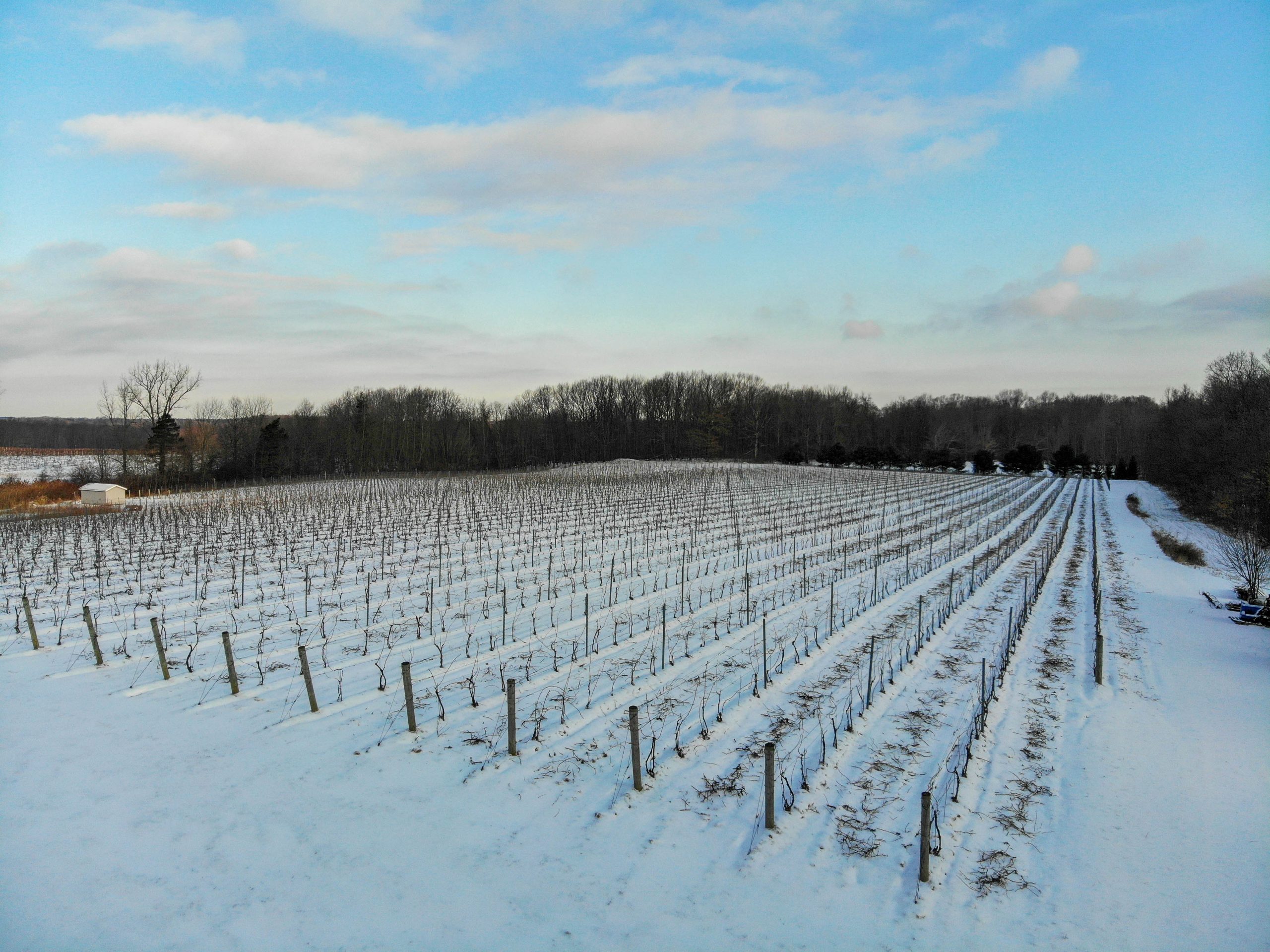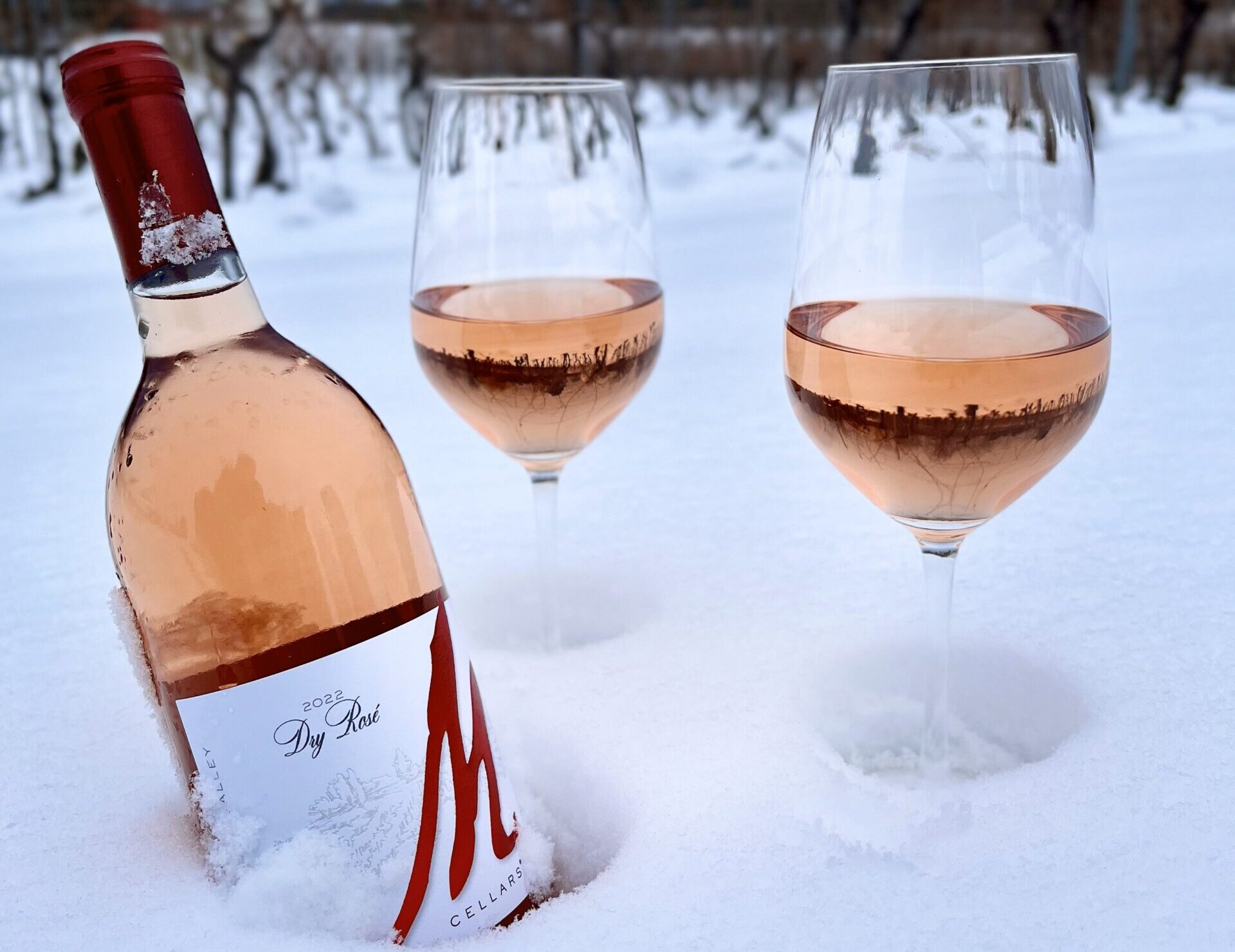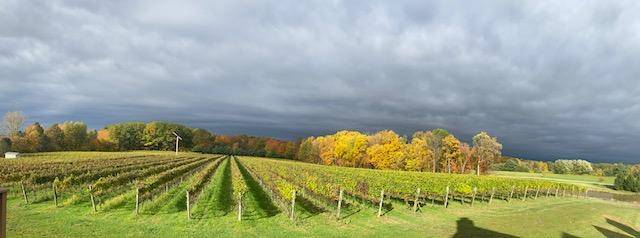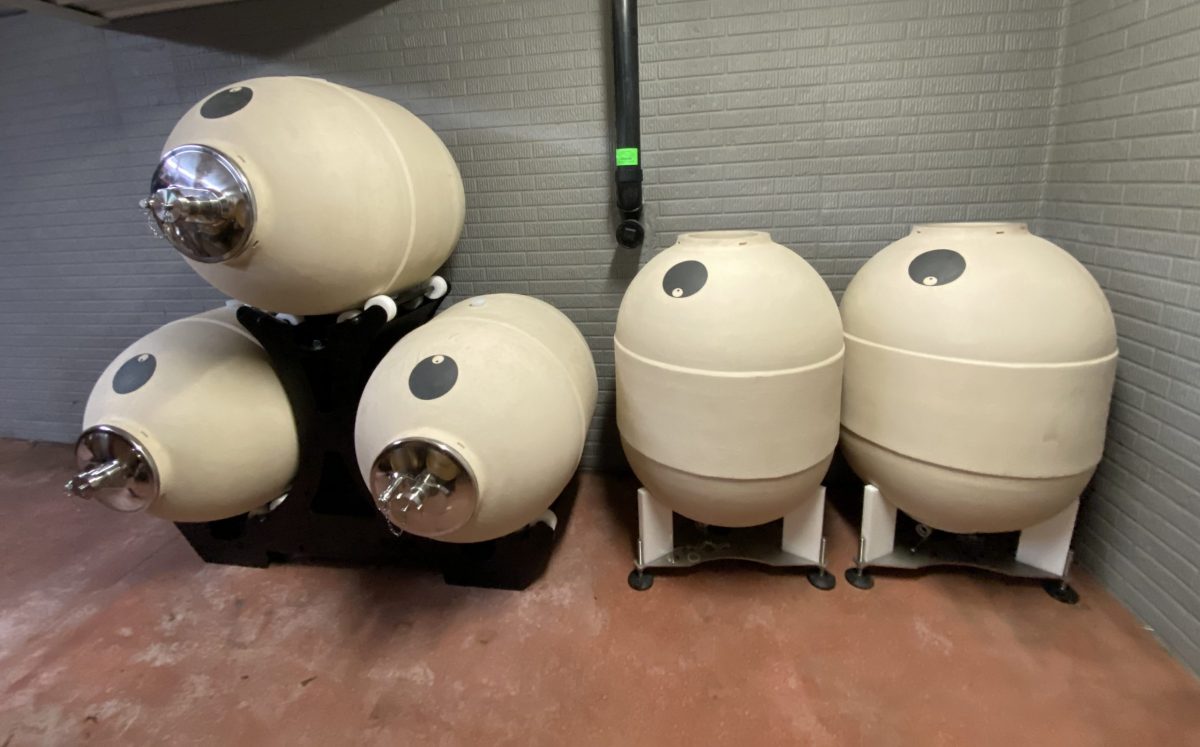We often think of the falling leaves of Autumn as an ending of sorts; a bittersweet predecessor to a long, dark winter (at least for us northerners). But just like a good night’s rest can leave you fresh and at your best, winter is an important stage in the life of healthy vines.
After the hustle and bustle of harvest, when the fruit has been picked, the leaves have been dropped, and the vines have been pruned, the vineyard settles in for some deeper self-work. This period of “dormancy” has a big impact on grapevine growth and flowering come spring. And while all appears quiet, there is still activity happening. It’s just mostly out of view.
Here are a few things our vines are getting up to in the winter season:
Saying No to H2O
As anyone who has slipped on black ice knows… water freezes. Our vines know this, too. If water were to freeze inside the plant’s living cells, it could damage the vine. As temperatures drop, the plants stop absorbing water through their roots and transfer any remaining water out of vulnerable tissues to safe places (called intercellular spaces) where it can freeze without threat.
Going on a Low-Carb Diet
Throughout the growing season, the vines collected and stored carbohydrates in their trunks. During winter, they subsist on these reserves, making sure to save enough energy to get a jump on things when spring finally arrives.
While there is a bit of action happening in our vineyard in winter, there’s even more going on in our cellars. The wines harvested last fall are busy developing into next season’s favorites. Luckily, we have some of our own winter reserves in our tasting room. We hope you’ll stop in and defrost by the fire with a glass of your favorite varietal.




